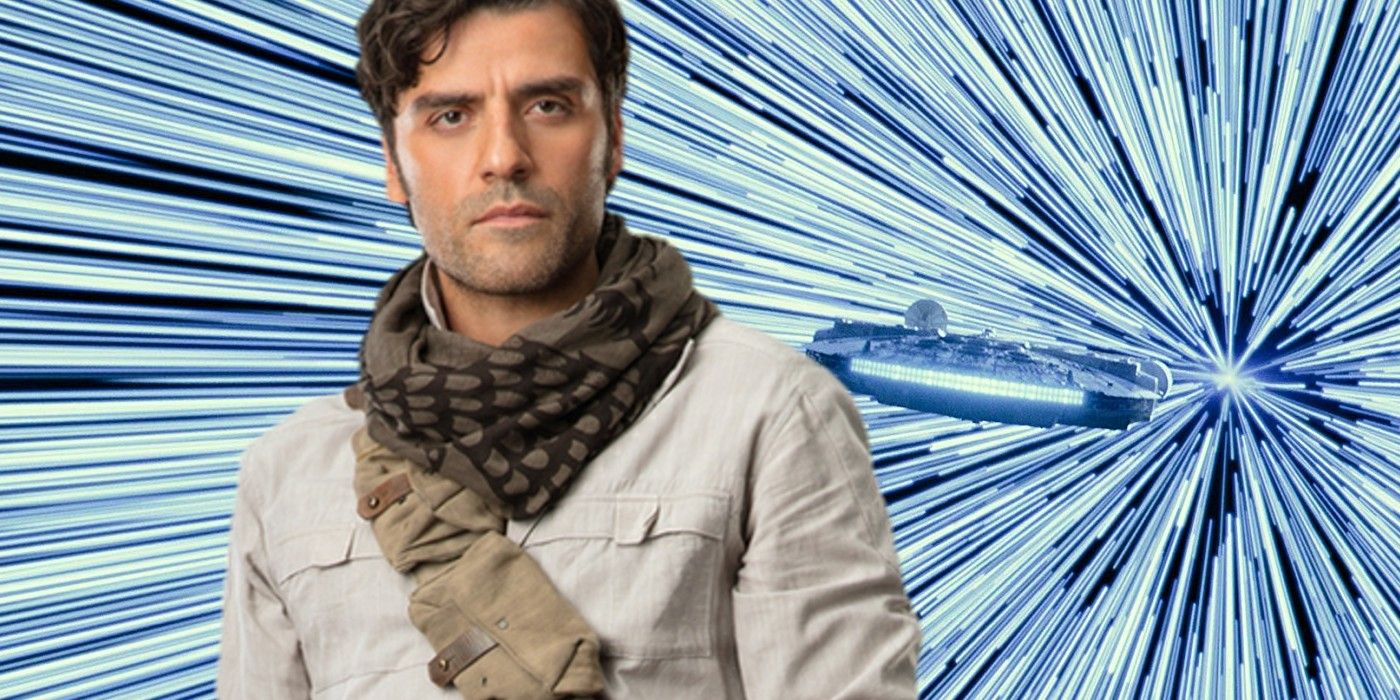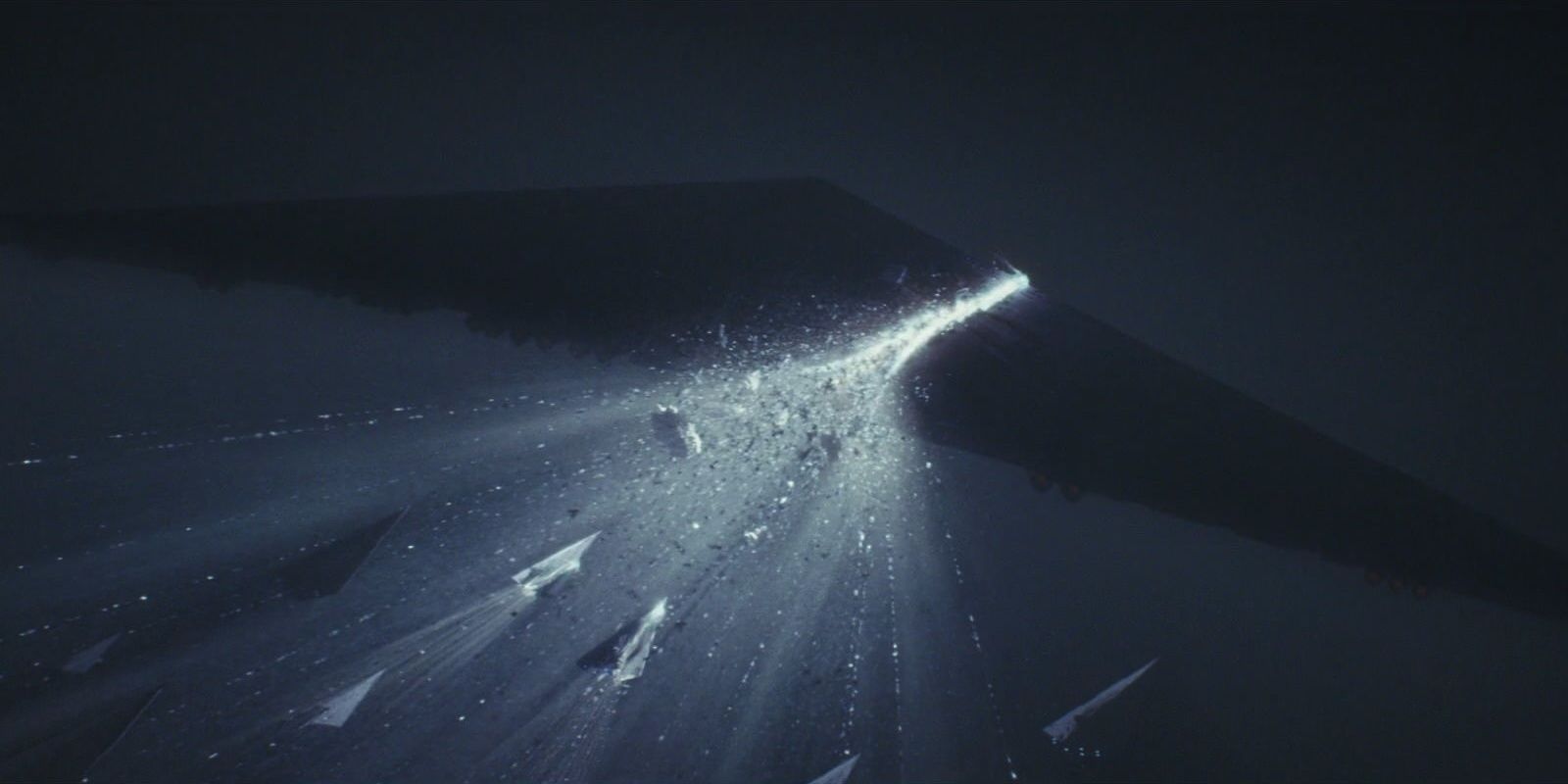The Rise of Skywalker fundamentally alters how lightspeed works in the Star Wars universe. It's no exaggeration to say that the Star Wars sequel trilogy is defined by division, and J.J. Abrams' The Rise of Skywalker proved no exception. The final chapter in the Skywalker saga was accused of messy plotting and introducing heaps of new lore that conflicted with existing mythology. The Rise of Skywalker also seemed to largely ignore the equally-controversial The Last Jedi, dropping many of the plot points and themes set up by Rian Johnson. One of the many inconsistencies in The Rise of Skywalker concerns the (mis)use of lightspeed.
The term "lightspeed" is coined during the original 1977 Star Wars movie, and describes when a ship travels fast enough to move through Hyperspace. Essentially, lightspeed is a necessary plot device in the Star Wars universe, otherwise characters would spend half of their screen time just traveling from one planet to the next. The jump to Hyperspace is visually represented by those familiar electric blue streaks wrapping around the cockpit, which have since become an iconic franchise staple. The premise is simple enough and served its purpose admirably during the original and prequel Star Wars trilogies but, predictably, has generated heated debate in more recent years.
The most glaring issue is the introduction of "lightspeed skipping" in The Rise of Skywalker's opening act. Attempting to evade First Order pursuers, Poe deploys this dangerous technique while piloting the Millennium Falcon, making repeated jumps through Hyperspace in quick succession. A crack pilot Poe may be, but it's strange that Han Solo or Anakin Skywalker never pulled the same trick on the numerous occasions they were being chased. It's possible that lightspeed skipping only became necessary after the First Order learned to track ships through lightspeed (as seen in The Last Jedi), but this solution is more an assumption than a direct answer, and the sudden new addition of lightspeed skipping to Star Wars lore sets a jarring, inconsistent tone for the rest of the movie.
Lightspeed skipping is also problematic because Poe jumps the Falcon onto planets, rather than near them. A ship should exit Hyperspace outside of a planet's gravity, but Poe repeatedly arrives within atmospheres - spiky rocks, a city, green cloud land - and this contradicts Han's speech in the original Star Wars movie about lightspeed travel requiring precise calculations. Perhaps lightspeed technology improved between trilogies, but once again, these gaps are left for the audience to fill - a criticism that could also apply to other The Rise of Skywalker elements such as Palpatine's survival. Arguably, the rules of lightspeed were already broken when Han piloted the Falcon through Starkiller Base's shields at lightspeed in The Force Awakens, but this was merely a deliberate failure to slow down, rather than landing directly on Starkiller Base from the other side of the galaxy, like Poe does in The Rise of Skywalker.
Aside from lightspeed skipping, The Rise of Skywalker also muddies the waters of the already-controversial Holdo maneuver. Introduced in The Last Jedi, Admiral Holdo piloted the last remaining Resistance vessel directly through the First Order's Supremacy flagship, cleaving the behemoth in two. Star Wars fans still debate whether such a tactic would be possible, but there remains no clear consensus on whether Holdo's sacrifice holds up to the science. The Rise of Skywalker initially offers an explanation for the Holdo maneuver - John Boyega's Finn helpfully explains that Holdo's big gambit was an inimitable attack with incredibly remote odds, virtually impossible to repeat. However, The Rise of Skywalker contradicts its own explanation when a Holdo Maneuver is executed on a Star Destroyer during the final battle, regurgitating the initial Holdo criticisms that arose after The Last Jedi.
In fairness, the entire Star Wars sequel trilogy has played fast and loose with the rules of lightspeed, sometimes for the sake of convenience, sometimes to create a cool visual moment. But The Rise of Skywalker perhaps did the most damage, first by introducing the unlikely lightspeed skipping technique, and then by making conflicting statements about the Holdo maneuver.


